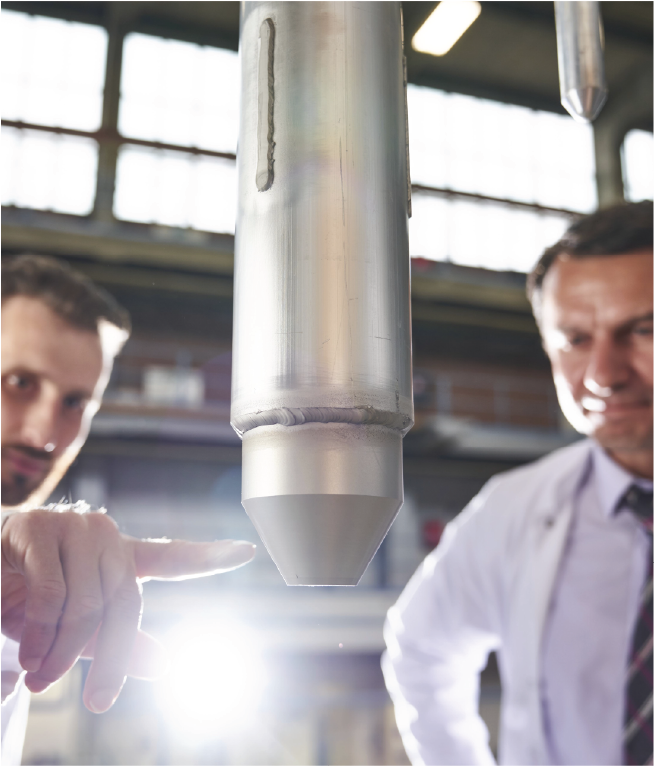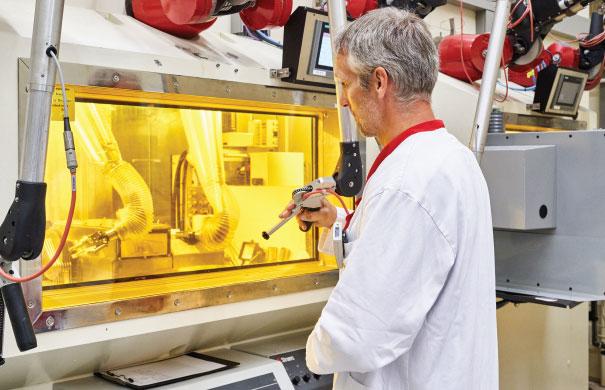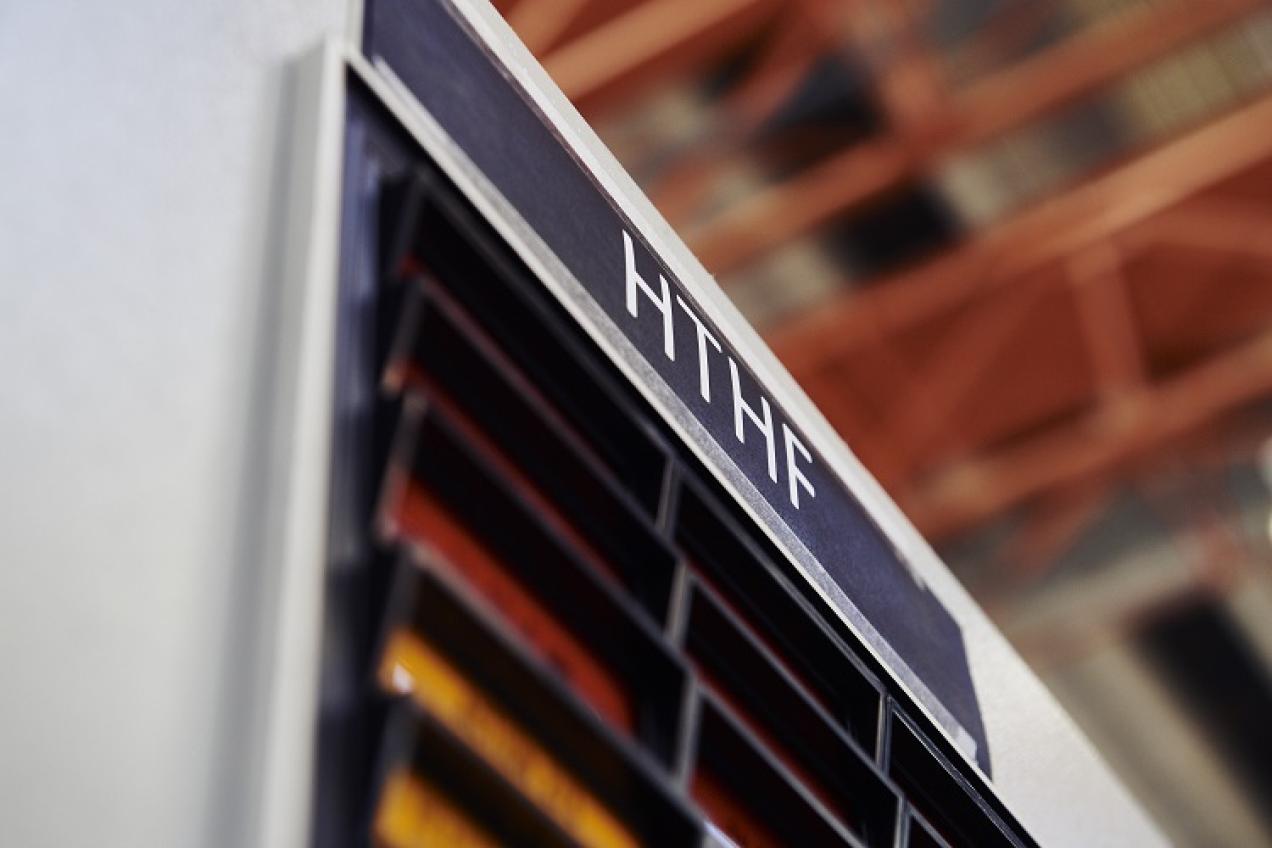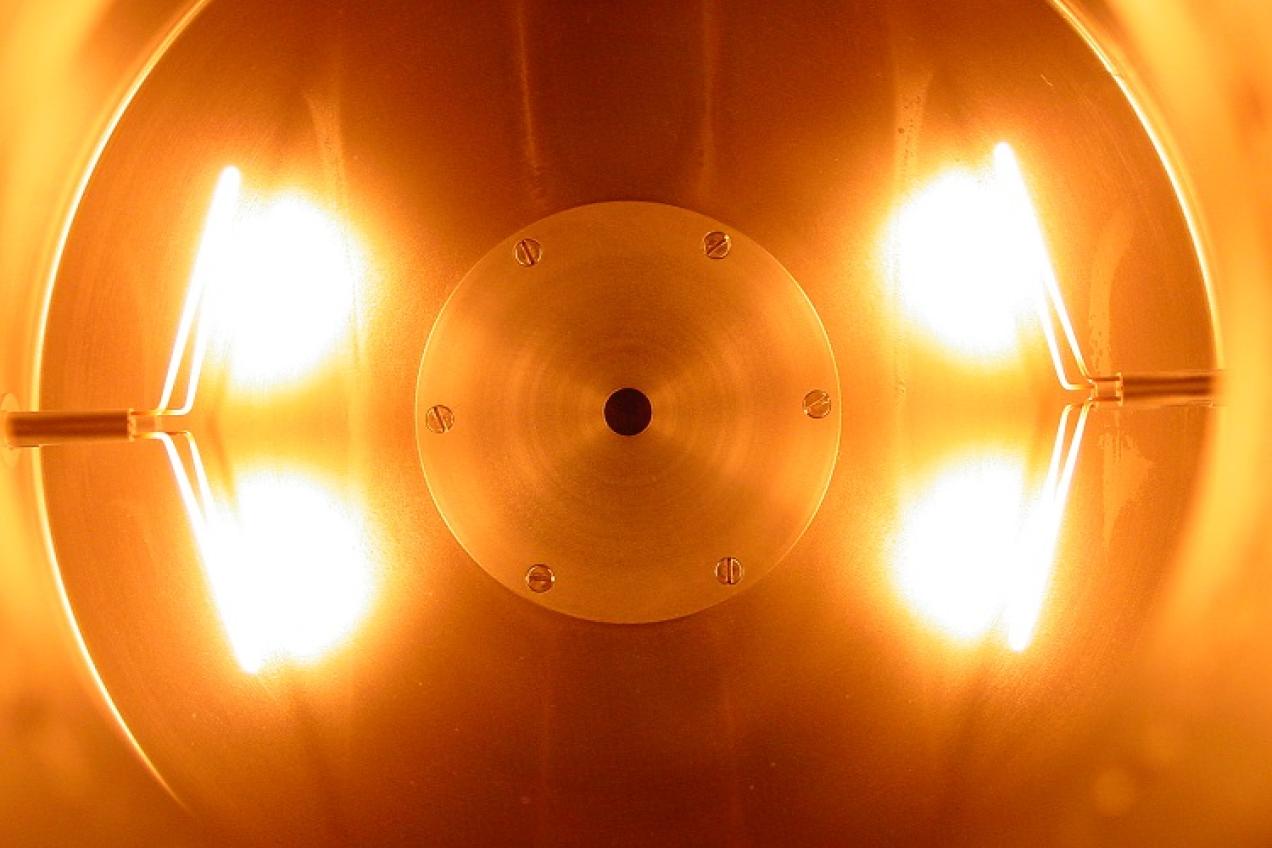Nuclear fusion
The sun on earth
No greenhouse gases, almost no long-lived radioactive waste and an almost unlimited amount of energy. Nuclear fusion may well be the energy solution of the future.

Imitation of the sun's power generation
Traditional nuclear reactors work by nuclear fission, a process that releases energy as heavy atomic nuclei divide into two nuclei. Nuclear fusion is the opposite.
Although only test fusion reactors exist, you only have to look at the sun to see a large fusion reactor. Indeed, nuclear fusion is the technique that mimics the sun's power generation in which two (hydrogen) isotopes collide and fuse into a heavier atomic nucleus (helium). This process takes place under very high pressure and temperature. This means that components in a nuclear fusion reactor are exposed to far more extreme conditions than in traditional nuclear reactors. SCK CEN is investigating the effect of these extreme conditions on fusion materials.
Millions of degrees & extreme pressure
Mimicking the sun is – you guessed it – not an easy task. The pressure in the Sun's core is extremely high and the temperature there reaches 15 million degrees Celsius.
This means that, under normal conditions, nuclear fusion cannot take place on Earth. Here, we cannot possibly create the high pressure required.
In order to still achieve similar fusion reactions at lower pressures, the temperature must be raised substantially. To this end, two isotopes of hydrogen, deuterium and tritium, are heated to 150 million degrees Celsius. At these extreme temperatures, an electrically charged gas is produced, called plasma. When the temperatures in the plasma get high enough, the particles will fuse together and enormous amounts of energy will be produced.

The impact of extreme temperatures and reactions
The components in a nuclear fusion reactor are exposed to much more extreme conditions than in conventional nuclear reactors. International research centres, including SCK CEN, join forces to assess the impact of these extreme conditions. What are the effects of radiation on the equipment, robotics and crucial structural materials? How do we maintain the nuclear reaction in the fusion reactor?
Triple support from Belgium
SCK CEN uses its comprehensive nuclear expertise to tackle these issues:
-

Irradiation services
Developing materials that are able to withstand the strong radiation and high temperatures of nuclear fusion is a real challenge to scientists. In its BR2 research reactor, SCK CEN simulates the neutron effects of nuclear fusion to gain fundamental insights. As soon as MINERVA, MYRRHA’s particle accelerator, is up and running, the installation will be used to experiment with irradiations for fusion materials.
-

Materials research
The plasma in a nuclear fusion reactor is entrapped in a strong, circular magnetic field so that direct contact with the reactor wall is avoided. There are many factors determining the success of this entrapment. SCK CEN studies how very energetic neutrons, originating from the fusion reaction, and the materials of the reactor vessel react to one another.
-

Measuring system for plasma current
The plasma is stabilised by an electric current. To measure this electric current, SCK CEN has developed a measuring system with optical fibres. These fibres can withstand extreme conditions such as radiation, high temperatures and magnetic fields and, at the same time, perform other measurements (e.g. local magnetic fields) as well.
ITER as pilot project
The technical and practical challenges of nuclear fusion are huge but the construction of the test fusion reactor ITER in Cadarache (France) is an important step forward. The ITER project should demonstrate the scientific and technical feasibility of nuclear fusion as a future energy source that can be used on earth. Worldwide, numerous research centres, including SCK CEN, join forces in this project to optimise the technology.
JT-60SA with piece of Belgian technology
In Japan, the world's largest experimental fusion reactor was inaugurated at the National Institutes for Quantum Science and Technology in the city of Naka, Japan. The experimental reactor, named JT-60SA, came about thanks to a collaboration between the European Union and Japan. In collaboration with international partners, SCK CEN was also involved. Indeed, the cryostat, one of the critical components in the reactor was designed and fabricated in Belgium with significant contribution of SCK CEN.
What makes the component so indispensable to the JT-60A? In nuclear fusion, plasma is generated. Strong magnets keep that plasma stable. The nuclear fusion reactor is capable of maintaining a reaction for at least 100 seconds. In the process, plasma temperatures rise to about 200 million degrees Celsius. So the magnets that keep the plasma stable, in turn, must absolutely not overheat. The cryostat should guarantee the operation of the magnets. How else, then, than with a super-freezer that reaches temperatures as low as -269 degrees Fahrenheit? In fact, that cold nearly equalled the coldest temperature ever measured in space, i.e. -273,15 degrees Celsius.